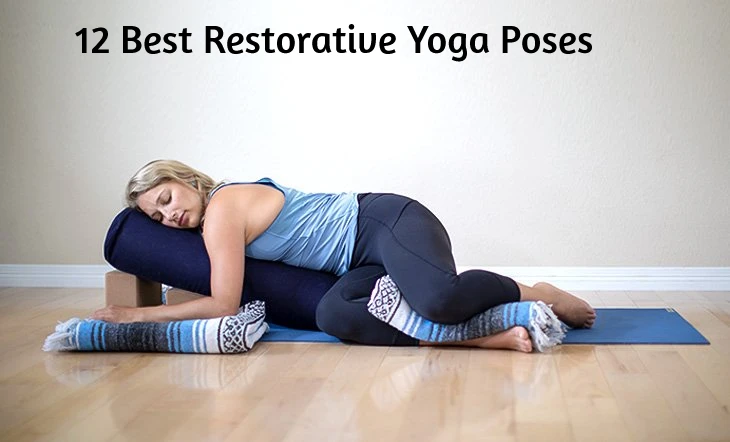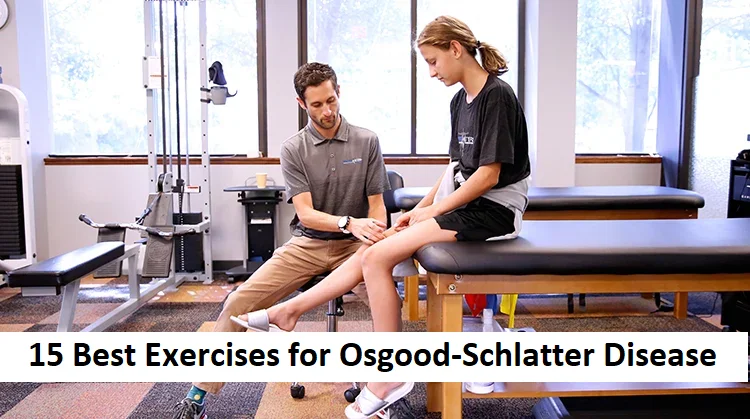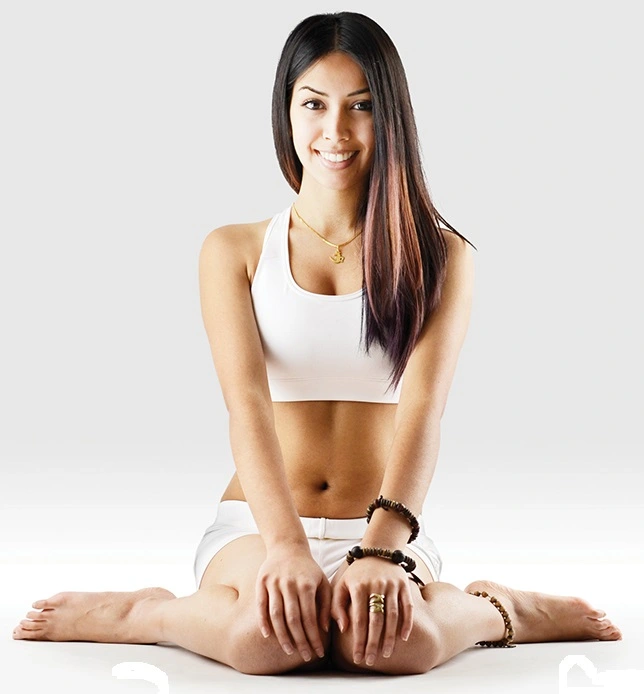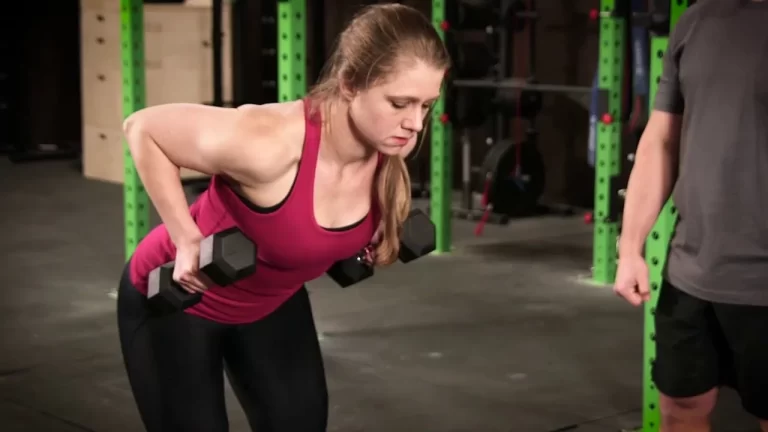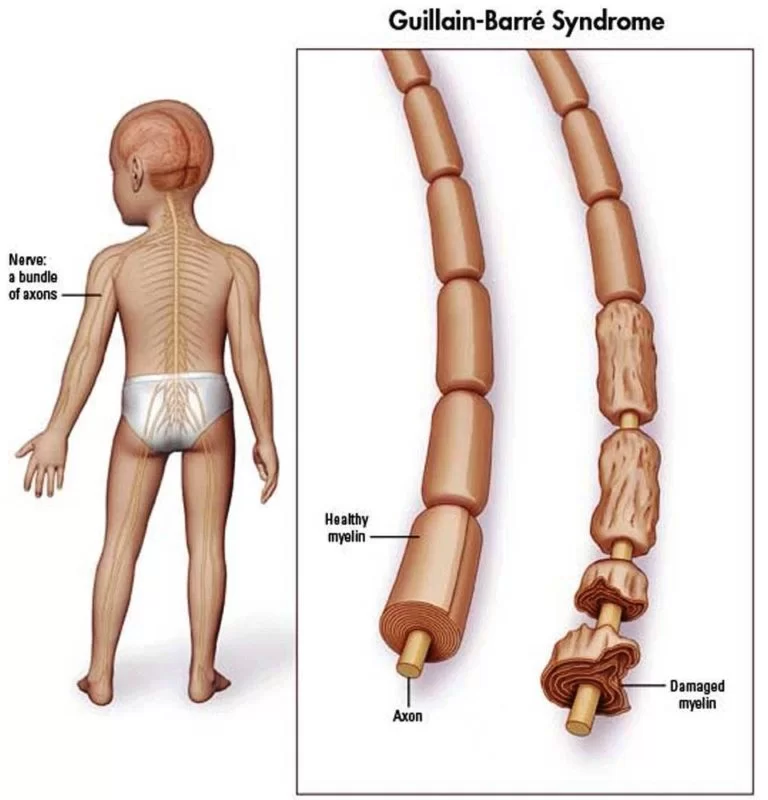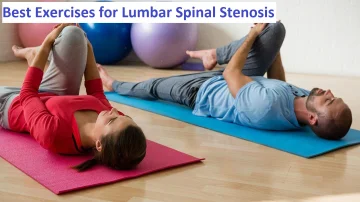12 Best Restorative Yoga Poses
Introduction
- A type of yoga called restorative yoga promotes emotional, mental, and physical relaxation.
- Suitable for all skill levels, restorative yoga emphasizes extended holds, calmness, and deep breathing.
- It is performed slowly.
- In contrast to more vigorous yoga forms like vinyasa or Bikram, restorative yoga poses often involve holding a position for five minutes or more and just a few poses.
- Continue reading to discover more about restorative yoga, including positions to attempt and advantages of this calming kind of exercise.
- The main goals of restorative yoga are to promote healing, calm down, and activate the parasympathetic nervous system.
- Unlike in a more dynamic class (like vinyasa), you will usually hold poses longer in this kind of practice and make use of props like blankets, bolsters, blocks, etc. to support yourself.
- (You may read our guide on restorative yoga to understand more about the practice.)
What is Restorative Yoga?
- Among the qualities that characterize restorative yoga are gentleness, support, and therapeutic effects.
- Fundamentally, restorative yoga is a form of non-active healing.
- The parasympathetic nervous system is believed to be activated by this particular kind of yoga.
- This is your nervous system’s “rest and digest” phase, which keeps essential processes operating normally.
- This type of yoga, as its name implies, “restores” the body to the function of the parasympathetic nervous system, which aids in the body’s ability to heal, relax, and regain equilibrium.
- Restorative yoga promotes relaxation by devoting time to lengthier asanas (postures or poses) and deeper breathing.
- This reaction can lower blood pressure, aid moderate breathing, and provide a calmer, more balanced mood.
- In restorative yoga, using props like blankets, bolsters, and blocks is essential.
- You can hold passive positions longer without straining or overtaxing your muscles thanks to the props.
- In addition, it makes you feel supported and at ease no matter what level of yoga expertise you have.
- Additionally, restorative yoga enables you to release tension in your muscles for extended periods of time without experiencing discomfort since the practice emphasizes complete relaxation while focusing on your breath.
What are the Benefits of Restorative Yoga Poses?
Many of the advantages of practicing other styles of yoga are also applicable to restorative yoga.
Important advantages that research has proven include the following:
- calms both your body and mind. Yoga has been associated with decreased levels of the stress hormone cortisol as well as decreased anxiety and tension.
- calms the central nervous system. The parasympathetic nervous system, which regulates relaxation, balances the sympathetic nervous system, which controls the fight-or-flight reaction.
- Restorative yoga helps you achieve this. elevates your emotional state. Deep breathing and relaxation are encouraged by yoga, which may lessen the symptoms of depression.
- lessens persistent discomfort. According to a source, yoga may help lessen osteoarthritis pain as well as headache and back discomfort.
- increases slumber. According to some, including yoga in your daily practice may improve the quality of your sleep.
- Be kind to your body. People with acute or chronic ailments are frequently advised to practice restorative yoga since it is typically safe.
- functions as a component of a comprehensive approach to treating long-term medical issues. Regular yoga practice may be beneficial for those who suffer from chronic illnesses.
- According to a 2018 analysis of research, yoga practitioners with cancer reported fewer physical and psychological symptoms as well as an increase in their overall quality of life.
- safe to carry out when expecting. It is safe to practice restorative yoga throughout pregnancy and is also easily modifiable. Prenatal yoga is one of the safest forms of exercise to do while pregnant, according to the American College of Obstetricians and Gynecologists.
Restorative yoga poses
- Props like blocks, bolsters, and folded blankets are commonly used in restorative yoga postures to provide a softer, more supporting feel.
- Having stated that props are not necessary for doing any restorative yoga postures.
- Restorative yoga often requires you to hold a position for at least five minutes.
- As long as it feels comfortable, you can hold a position for an extended period of time.
- Some folks spend up to twenty minutes in restorative positions.
Following are the best restorative yoga poses
Fish pose
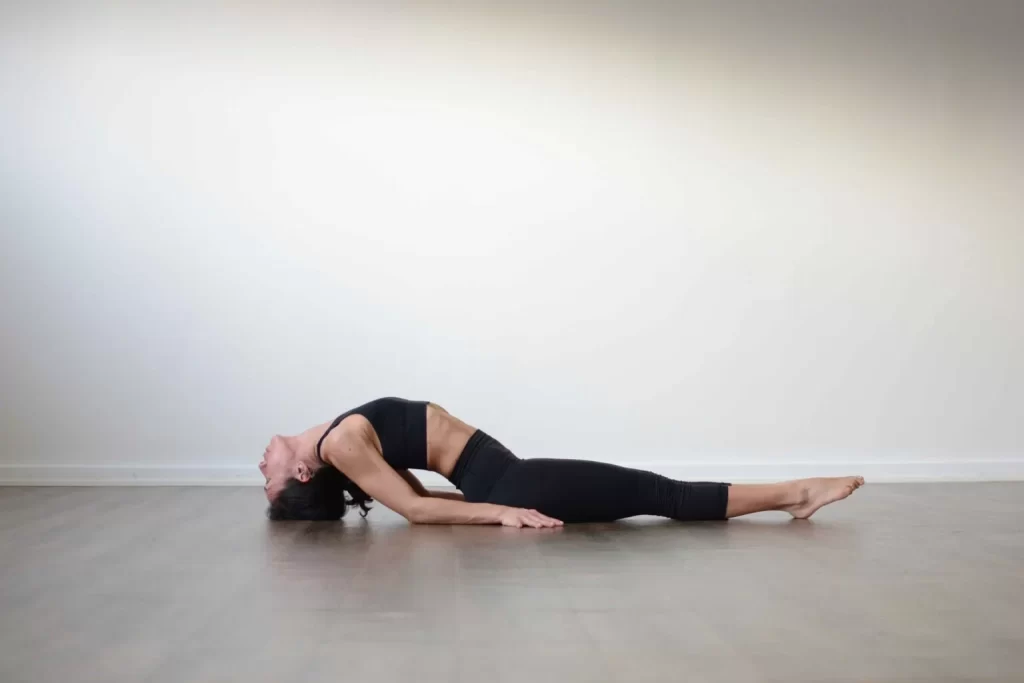
- You should definitely choose this restorative position if you spend a lot of your day sitting down.
- By opening up your chest and relieving stress in your shoulders and neck, the Fish Pose can help lengthen your spine.
- Use a bolster or two folded blankets or towels under your shoulders and head to improve the comfort of this posture.
Steps To Follow:
- In the middle of your mat, arrange a bolster or two folded blankets parallel to one another with a tiny space between them.
- With the covers at your back, take a seat to begin.
- Place your shoulder blades on the blanket nearest to you while you lie back.
- Lean your head on the other blanket. Legs can be kept folded or extended in front of the body.
- Put your arms down by your sides or hold them up over your head with the palms facing up.
- Shut your eyes and exhale deeply as you let go of any physical tension. Your whole body will sink into the floor and covers.
- For at least ten minutes, maintain this posture. Pay close attention to your deep breathing and let go of any muscle tightness.
Child’s pose
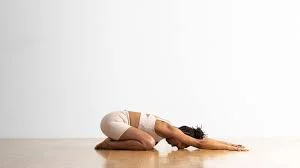
- In addition to gently stretching your spine, hips, glutes, hamstrings, and shoulder muscles, this position helps reduce tension and exhaustion.
- If your head and torso are supported, it can help ease neck and back discomfort.
Steps To Follow:
- Place your big toes together, knees hip-width apart, and your buttocks on your heels as you kneel on the ground.
- For support, tuck a blanket or pillow between your thighs and calves.
- After exhaling, bend forward so that your body is between your thighs.
- lowering your head to the ground.
- With your hands on the ground, extend your arms in front of you, over your head.
- You can also place your arms with your palms facing up next to your body if you find this too challenging.
- You can place a pillow or folded blankets beneath your head and arms for additional support.
- Hold this position for five minutes or longer, taking slow breaths in and out.
- Lift your torso up into a sitting position to release.
Corpse pose
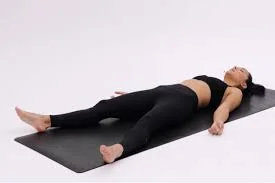
- Consider attempting the corpse posture, also known as savasana, for profound relaxation and stress reduction.
Steps To Follow:
- Start with a folded blanket at the top of your mat and work your way down to a bolster or two folded blankets placed on top of one another.
- With your back straight and your legs bowed, take a seat between the folded blankets.
- Stretch your legs till the backs of your knees are supported by the folded blanket or bolster.
- Reposition yourself such that the back of your head is on the blanket gradually.
- With your hands facing up, naturally, arrange your arms at your sides.
- There will be space between your torso and arms.
- For at least 10 minutes, maintain this posture.
- Pay close attention to your deep breathing and let go of any muscle tightness.
Legs-up-the-wall pose
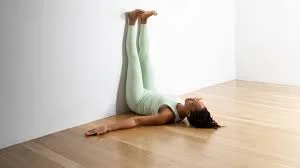
The legs-up-the-wall position stretches your hamstrings and the back of the neck gently, relieves tired legs and feet, and may assist with mild back pain.
Steps To Follow:
- Your yoga mat’s narrow end should be pressed up against the wall.
- Fold a blanket and place it in the center of the mat.
- You’ll lay your head on the blanket. If you’d like, you may even use a folded blanket or cushion to support your neck.
- Place your right side against the wall while sitting, and then swing your legs up against the wall while lying back.
- Measure the distance from your ass to the wall.
- Your buttocks should be as near to the wall as it is comfortable for you to be.
- You can arrange one or two folded blankets on the mat, spaced 5 to 6 inches from the wall, so that your lower back
- Rests on top of it for additional support.
- Extend your arms to the sides or let them rest across your chest.
- Inhale deeply, and then release your back, neck, and hips from the floor as you exhale.
- Take ten minutes to relax in this posture.
- Pay close attention to your deep breathing and let go of any muscle tightness.
Forward fold
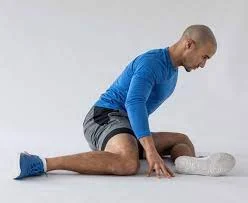
Steps To Follow:
- Assume a lofty stance and extend your arms upward.
- Exhale, bending your knees if necessary, and folding your upper body forward from your hips.
- Taking a breath, perform a half-life.
- Take a breath out, then release it. As long as a minute, hold on.
Cross-legged forward fold + side stretch
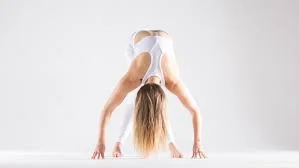
Steps To Follow:
- Settle onto your mat in a cross-legged stance.
- With your hands extended, fold your torso over your legs.
- After that, stretch your arms to the right side of your body.
- On the left side, repeat. Hold it for a minute or thirty seconds.
Seated cat-cow
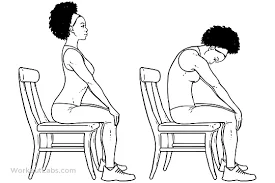
Steps To Follow:
- Place your legs over your front body and take a sitting position.
- Gently place your hands on your knees.
- Breathe in while you raise your head, arch your back, and push your chest forward.
- Breathe out as you circle your back, tightening your core and opening up your vertebrae.
- Do this for a minimum of one minute.
Supine goddess
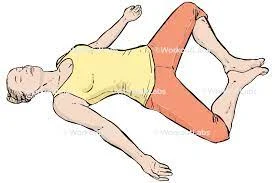
Steps To Follow:
- Sit up straight and slowly drop onto your back.
- With your feet together in a diamond pattern, let your knees drop apart and your legs spread apart.
- Take a minute or five to rest here.
Pigeon pose
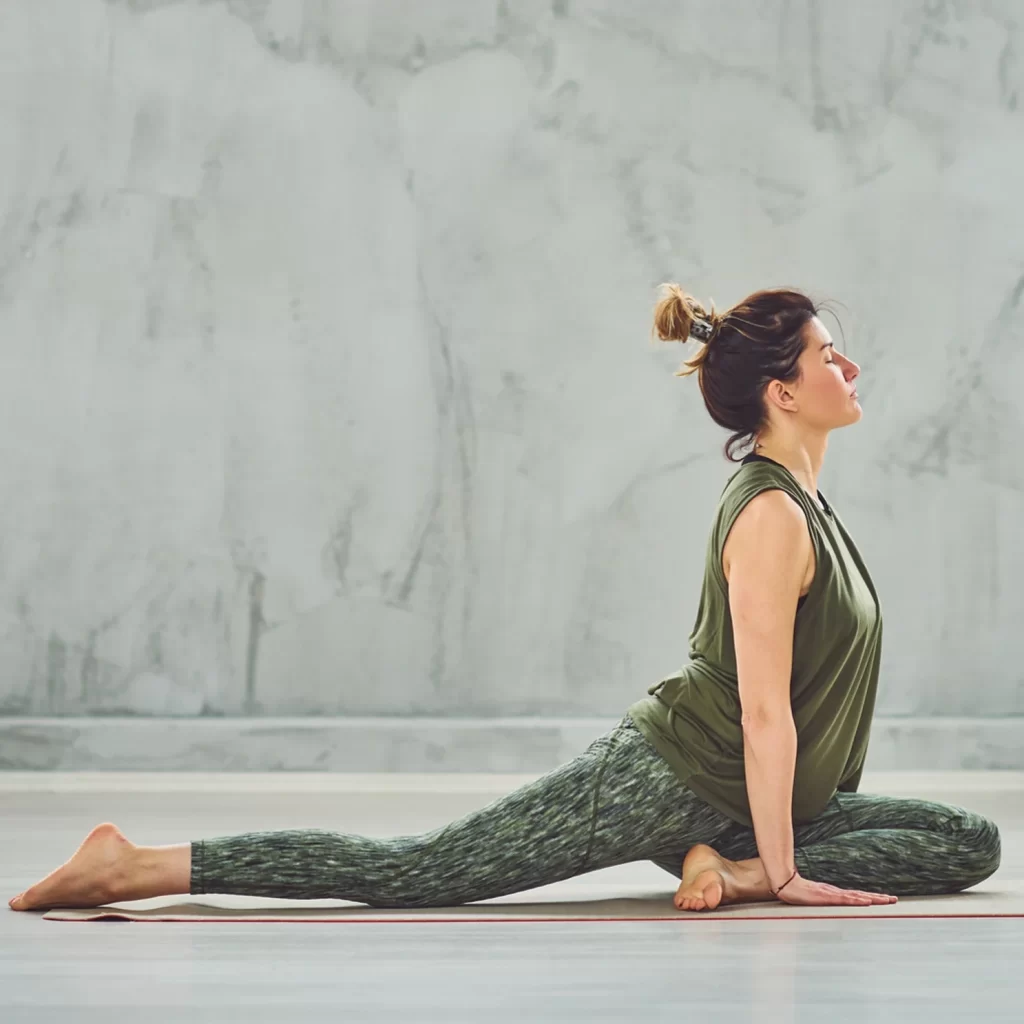
Steps To Follow:
- Reach your right foot up to the heavens while in downward dog.
- Bring your knee into alignment with your right arm by bending it.
- Slide your right foot to the left, letting your shin land on the floor.
- Lower your rear leg on the mat and raise your torso.
- After taking a breath, carefully lower your body till it drapes over your right leg.
- Permit your front leg to fall across your body.
- Hold for one to five minutes at most.
- On the other side, repeat.
Puppy pose
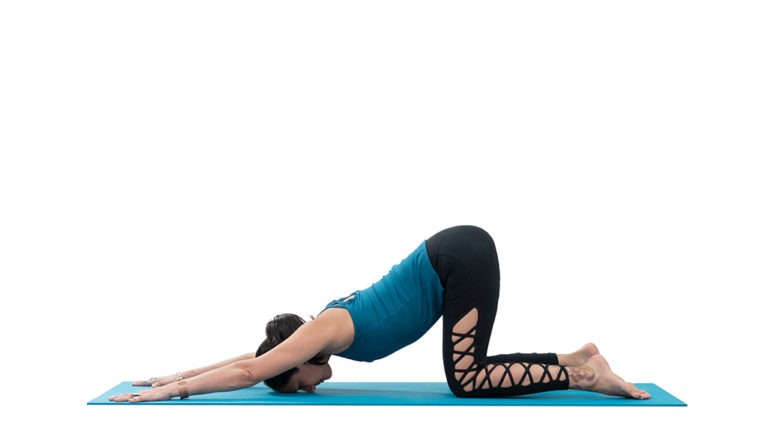
Steps To Follow:
- Bring your knees together from the tabletop or child’s position.
- Bring your chest onto the mat by advancing your fingertips.
- Open your chest and bend your back by allowing your hips to rise upward toward the ceiling.
- Hold for one minute at most.
Sweated twist
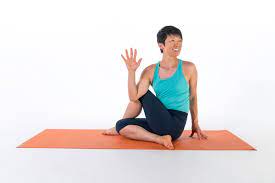
Steps To Follow:
- With your legs out straight, take a seat.
- After placing your right foot inside your left thigh, cross your left leg over your right to place your left ankle outside of your right knee.
- Sit up straight and make sure both sit bones are on the floor.
- Raise your arms toward the heavens and take a deep breath.
- With your right hand on your left knee, rest your left arm on the mat behind you.
- Draw in a deep breath.
- When you release the breath, look over your left shoulder and rotate your body from bottom to top.
- After up to 30 seconds of holding, return to the middle. On the other side, repeat.
Savasana
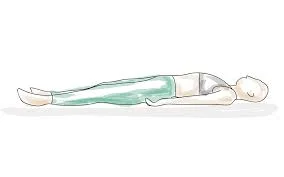
Steps To Follow:
- Assume a prone position, bringing your heels into contact with your toes.
- With the palms facing up, bring the arms close to you.
- Shut your eyes, give your body space to unwind, and resume regular breathing.
- Hold for a certain amount of time.
Conclusion
A passive, contemplative kind of yoga called restorative yoga helps you release physical stress and concentrate on your breath. Unlike other forms of yoga, restorative yoga requires you to stay in certain poses for at least five minutes at a time.
Props like blocks, bolsters, or folded blankets are frequently used in restorative yoga poses. With the support of these props, you may deepen the position and achieve more body relaxation. Most people perceive restorative yoga to be safe and peaceful. Before engaging in restorative yoga, discuss any worries you may have with your physician or physical therapist.
FAQs
How does restorative yoga work?
A type of yoga called restorative yoga promotes emotional, mental, and physical relaxation. Suitable for all skill levels, restorative yoga emphasizes extended holds, calmness, and deep breathing. It is performed slowly.
What distinguishes restorative yoga from regular yoga?
Restorative yoga focuses on releasing mind-body tension and bringing the nervous system into a healing condition, whereas yin yoga emphasizes extending your connective tissues and other similar areas. Props are utilized in both forms of yoga, but in yin yoga, their purpose is to either deepen or relax the stretch.
Who is eligible to do restorative yoga?
Because restorative yoga is so flexible, almost anybody may practice and benefit from it, regardless of age or physical ability.
Is restorative yoga easy?
Beginners will benefit greatly from restorative yoga because it doesn’t require a lot of expertise or flexibility for the moves. Elderly people who may have physical restrictions and are seeking relief from body discomfort might also benefit from this type of yoga.
What are the benefits of restorative yoga?
With the use of props to provide total support, restorative yoga allows you to maintain postures for extended periods of time while experiencing profound relaxation. The primary goal of restorative yoga is to help us attain physical, mental, and emotional relaxation through the use of props to help us relax in postures without strain or discomfort.
References
- Need A Break? 9 Restorative Yoga Poses To Help You Loosen Up & Wind Down. (2021, October 4). Mindbodygreen. https://www.mindbodygreen.com/articles/restorative-yoga-poses
- Lindberg, S. (2020, September 23). The Benefits of Restorative Yoga and Poses to Try. Healthline. https://www.healthline.com/health/restorative-yoga-poses#Mindful-Moves:-15-Minute-Yoga-Flow-for-Anxiety

